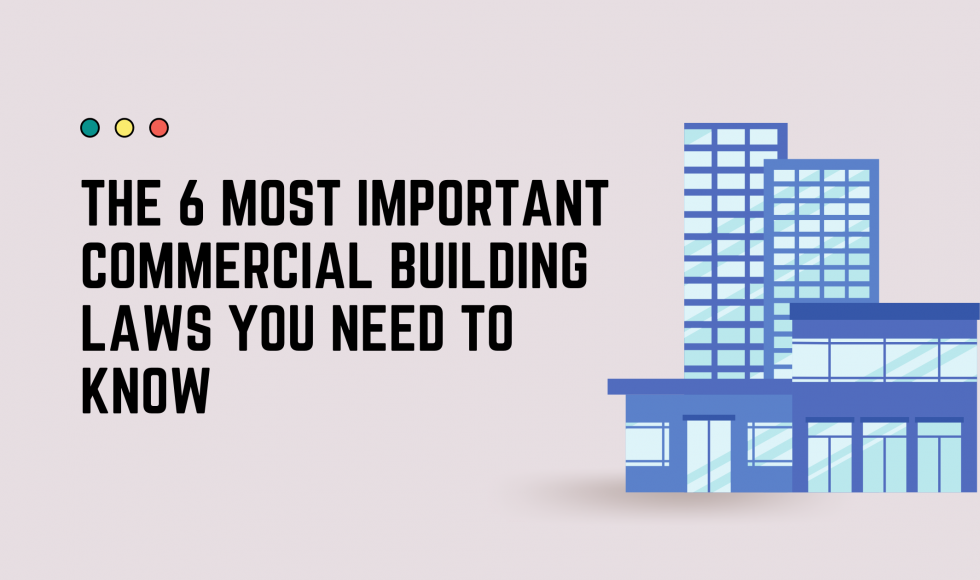When you are planning to build a commercial building, it’s important that you know your rights and responsibilities. These laws will ensure that your project is in compliance with regulations set by the government and other groups that oversee the construction industry. They provide guidelines for all new buildings, including those that are residential or commercial.
Height Of Buildings
There are certain building laws in Australia that dictate the maximum height of a commercial building. Depending on the state or territory in which the building is located, the maximum height limit may vary. However, there are some general rules that apply to all commercial buildings in Australia.
The first rule is that the maximum height of a commercial building must not exceed 50 meters. This rule applies to all states and territories in Australia. The second rule is that the total height of a commercial building must not exceed four stories. This rule also applies to all states and territories in Australia.
The third rule is that the maximum height of a commercial building must not exceed 20 meters if it is located within 100 meters of a residential property. This rule applies to all states and territories in Australia except for Victoria and Western Australia.
Energy Efficiency Standards
As the cost of living continues to increase, the need for energy efficiency standards in commercial buildings becomes more apparent. These standards help to ensure that buildings are well-insulated and that windows and doors are properly sealed. By meeting these standards, commercial buildings can save money on their energy bills and help to reduce the overall cost of living for their tenants.
There are a number of different energy efficiency standards that commercial buildings must meet. The most common of these is the International Energy Conservation Code (IECC). This code sets forth requirements for the insulation of walls, ceilings, floors, and windows in commercial buildings. It also requires that doors and windows be properly sealed in order to prevent air leakage.
In order to meet the IECC, commercial building owners must provide an insulation analysis report to their local building department.
Fire Safety Regulations
Commercial buildings must comply with strict fire safety regulations in order to ensure the safety of occupants and employees. These regulations include having a certain number of fire exits and fire extinguishers, depending on the size and occupancy of the building. Failure to comply with these regulations can result in serious consequences, including hefty fines and possible closure of the business.
Business owners should work closely with their local fire department to ensure that their building is up to code and meets all fire safety requirements. By taking these precautions, they can help protect their employees, customers, and property in the event of a fire.
Building Code Compliance
As of May 1st, all commercial buildings must comply with the National Construction Code, which sets out minimum standards for safety and fire prevention. The new code is stricter than the previous one and will help to ensure that commercial buildings are safe for both occupants and first responders.
The National Construction Code covers a wide range of topics, including structural integrity, fire safety, and energy efficiency. It is important for builders to be familiar with the code in order to ensure that their projects meet all the necessary requirements.
The new code will help to improve public safety by setting higher standards for commercial buildings. It is important for builders to make sure that they are up-to-date with the latest code requirements in order to avoid any costly delays or disruptions.
Plot Ratio
In commercial construction, the plot ratio is one of the most important building laws. It refers to the maximum floor area that can be built on a given piece of land and is typically expressed as a ratio of the total floor area to the size of the land parcel.
For example, a plot ratio of 1:5 means that for every 1 square meter (m2) of land, no more than 5 m2 of floor area can be built. A plot ratio is an important tool for regulating density in urban areas and ensuring that buildings are appropriately spaced apart.
In Australia, plot ratios vary from state to state, but are generally between 0.5:1 and 1:1. In some cases, higher plot ratios may be permitted if a development includes public amenities such as parks or playgrounds.
Light And Ventilation
When it comes to commercial buildings, there are several important laws in Australia that need to be taken into account. One of these laws is ensuring that the building has adequate light and ventilation.
In order to ensure that a commercial building has adequate light and ventilation, there are a few things that need to be taken into account. First, the building should be designed in such a way that natural light can enter the space. Second, there should be a sufficient number of windows in the space to allow for adequate ventilation. Finally, mechanical ventilation should be used in areas where natural ventilation is not possible.
By taking these factors into account, you can help ensure that the electrical needs of your commercial building is compliant with Australian law and is also a comfortable and healthy environment for occupants.
Conclusion
In short, commercial buildings can be a lucrative and rewarding venture. But before you decide to invest your hard-earned money into one, make sure it is legal. This will save you from unnecessary stress and problems later on down the line.

